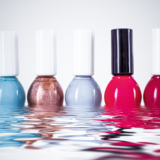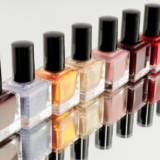Will Acrylic Paint Stick to Plastic?

Will acrylic paint stick to plastic? Acrylic paint can adhere to plastic surfaces, making it a versatile choice for artists and DIY projects. Achieving successful adhesion requires understanding the factors that affect the bond and using proper surface preparation techniques. Cleaning the plastic surface thoroughly and ensuring it is free from dust and dirt is crucial. Additionally, using a primer specifically designed for plastic can enhance the adhesion of acrylic paint. By following these steps and employing suitable techniques, you can achieve long-lasting and visually appealing results when painting on plastic objects.
I. Factors Affecting Adhesion of Acrylic Paint to Plastic
1. Surface Texture:
The texture of the plastic surface plays a crucial role in paint adhesion. Smooth surfaces may require slight abrasion or sanding to create a rougher texture, providing better grip for the paint. Creating a microscopically rough surface helps the paint adhere more effectively.
2. Porosity:
The porosity of the plastic surface affects how readily it accepts the paint. Some plastics have porous surfaces that allow the paint to penetrate and bond more securely. In contrast, non-porous plastics may require additional surface preparation, such as using a primer or adhesion promoter, to enhance adhesion.
3. Cleanliness:
Proper surface cleanliness is essential for optimal adhesion. Any dust, dirt, or grease on the plastic surface can hinder paint adhesion. Thoroughly cleaning the surface using mild detergent or alcohol ensures the removal of any contaminants that may compromise the bond between the paint and plastic.
4. Chemical Compatibility:
The compatibility between the acrylic paint and the plastic surface is crucial. Certain plastics may have chemical properties that make them more or less compatible with acrylic paint. It is advisable to test the paint on a small, inconspicuous area of the plastic surface to ensure compatibility before proceeding with the full application.
5. Surface Preparation:
Adequate surface preparation significantly improves paint adhesion. Apart from cleaning, applying a primer specifically formulated for plastic surfaces can create a suitable bonding layer for the paint. Primers designed for plastics promote adhesion and help the paint adhere more effectively to the surface.
II. Preparing the Plastic Surface
Step 1. Cleaning the Surface:
To begin, use a light detergent or soap to scrub the plastic surface completely. This aids in getting rid of any debris such as grease, grime, or dust that can prevent paint from adhering. Before continuing, carefully rinse the surface and let it air dry entirely.
Step 2.Removing Existing Coatings:
It is advised to take off any existing paint or varnish from plastic surfaces before painting. Depending on the kind and thickness of the coating, this might be accomplished using the proper paint strippers or sanding processes. After removing the coatings, make sure the surface is clean and clear of any leftover material.
Step 3. Sanding or Roughening the Surface:
For smooth plastic surfaces, lightly sanding or roughening the surface might improve paint adhesion. To gently scratch the surface, use abrasive pads or fine-grit sandpaper. This aids in forming small grooves that give the paint a greater grip. To get rid of any sanding residue, clean the surface after sanding.
Step 4. Applying a Primer or Adhesion Promoter:
To improve paint adhesion on plastic surfaces, it is advised to apply an appropriate primer or adhesion promoter. Select a primer made especially for use on plastics. Follow the manufacturer’s recommendations while applying the primer and use a thin, even coat. Prior to beginning the painting process, let the primer completely dry.
III. Will Acrylic Paint Stick to Plastic?
Will acrylic paint stick to plastic? Acrylic paint can adhere to plastic, but the specific type of plastic plays a role. Plastics like polyethylene, polypropylene, and polyvinyl chloride have different characteristics that impact paint adhesion. Smooth plastics may require surface preparation, while porous ones tend to accept paint well. Understanding the properties of the plastic is key to ensuring successful adhesion. Proper cleaning and priming techniques are often necessary. By considering the plastic’s qualities, artists can select appropriate techniques and products for achieving effective paint adhesion.
IV. Steps to Apply Acrylic Paint on Plastic
To create a smooth and long-lasting finish when applying acrylic paint to plastic surfaces, care must be taken and suitable method must be used. How to use acrylic paint on plastic successfully is described in the following step-by-step procedure:
Step 1: Set Up the Work room
To ensure the best conditions for painting, set up a well-ventilated room with sufficient lighting. To prevent paint drips or splatters on the nearby surfaces, place a drop cloth or newspaper.
Step 2: Pick a Painting Technique:
Decide which painting style best fits your project and preferences. For smaller spaces and intricate work, brush painting is the most popular technique, whereas spray painting is appropriate for bigger surfaces. For best effects, think about utilizing a high-quality brush or a paint sprayer.
Step 3: Apply a Base Coat (Optional):
Applying a base coat might improve paint adhesion and offer an even color base, depending on the desired effect and the type of plastic. Apply the base coat in a thin, equal layer using a brush or spray. Prior to moving on, let it totally dry.
Step 4: Mix or Thin the Paint (If Needed):
If the acrylic paint is too thick or has to be a certain consistency, you may want to thin it by mixing it with another substance or by adding water. For the proper ratios, refer to the manufacturer’s directions, then fully combine the ingredients to obtain the correct consistency.
Step 5: Begin Painting:
Using the sprayer or brush, add acrylic paint to the container as directed by the manufacturer. Start painting the plastic surface with even, smooth strokes. When painting with a brush, start at one edge and move in the other direction while applying the same amount of pressure.
Step 6: Create smooth covering:
Avoid using excessive pressure or packing the brush with paint to create smooth and even covering. Apply many light coatings, letting each one dry completely before moving on to the next. Drips, stains, and uneven coverage are avoided as a result.
Step 7 :Use Additives or Mediums (Optional):
To enhance adhesion, durability, or particular visual effects, think about using additives or mediums made for acrylic paints. These might be flow extenders, improvers, or retarders. To assess the intended effect, try with small amounts according to the manufacturer’s instructions.
Step 8: Allow for Appropriate Drying and Curing:
Once the painting is finished, let the acrylic paint cure and dry in accordance with the manufacturer’s directions. By doing this, the paint is guaranteed to have the best possible endurance and to thoroughly adhere to the plastic surface.
VII. Tips for Better Adhesion
Acrylic paint needs to adhere to plastic surfaces well, so paying attention to the little things and using some useful methods can help. To improve acrylic paint’s adhesion to plastic, take into account the following ideas:
1. Apply Heat: Using a hairdryer or heat gun to apply a little heat might help the acrylic paint adhere to the plastic surface. Avoid applying too much heat to avoid damaging the plastic or causing the paint to bubble.
2. Use Multiple Thin Layers: Use multiple thin layers of paint rather than one big one. This facilitates full-layer drying and improves adhesion. Each layer should be applied evenly, and once it has dried completely, add another.
3. Give Your Items Enough Time to Dry: When it comes to drying time, patience is crucial. Before continuing, let each coat of paint completely dry in accordance with the manufacturer’s directions. Inadequate adherence and uneven coverage can be the results of rushing the drying process.
4. Use sealers or varnishes: After the paint has dried, adding a sealer or varnish can add an extra layer of protection and improve adherence. Pick a sealant that is made especially for acrylic paints and plastics. Observe the application and drying time directions.
5. Minimize Handling: After the paint has set, minimize handling of the painted plastic surface, particularly while it is curing. The adhesion and endurance of the paint can be harmed by excessive rubbing or scratching.
VIII. Alternative Options for Painting Plastic
Alternative options are available if acrylic paint doesn’t match your needs for painting plastic surfaces. The following substitutions are appropriate for painting plastic.
1. Enamel Paint:
For painting plastic surfaces, enamel paint is a common option. It provides a smooth and glossy surface while giving outstanding adhesion and durability. Enamel paint comes in a variety of colors and can be used to paint with a brush or a sprayer.
2. Spray Paint for Plastics:
Spray paints that have been particularly developed for painting plastic surfaces are available. These paints offer good coverage, firm adherence, and a smooth finish. They are a practical choice for painting plastic things because they are available in a variety of hues and finishes.
3. Vinyl Dye:
Another option for painting plastic surfaces is vinyl dye. It is designed specifically to penetrate vinyl and plastic surfaces, leaving behind a durable, flexible, and vivid finish. Vinyl dye can be applied with a brush or a spray and is available in liquid or aerosol form.
Conclusion
Will acrylic paint stick to plastic? With proper preparation and application techniques, acrylic paint can adhere to plastic surfaces effectively. Artists can achieve successful results by understanding the factors that influence adhesion and taking the necessary steps. There are numerous methods for creating beautiful artwork on plastic, including brush painting, spray painting, and exploring alternative options.








